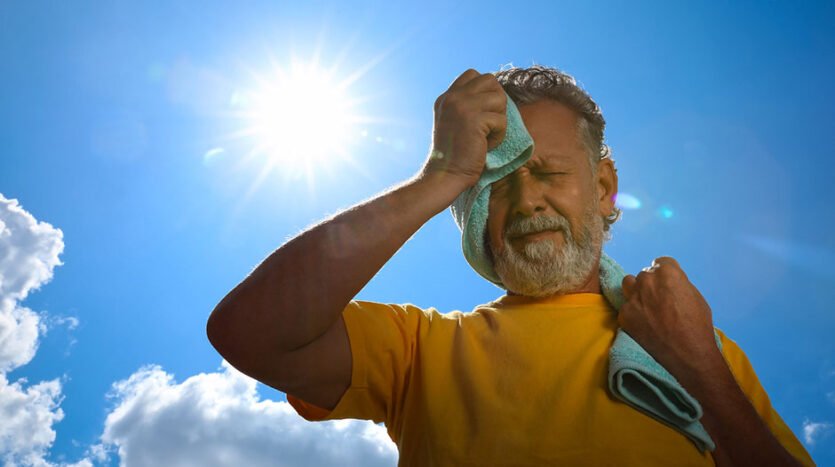Sun Safety Matters: Practical Ways to Prevent Heat Stroke
As summer temperatures soar, heat-related illnesses like heat stroke become a serious concern. Heat stroke is a potentially life-threatening condition that occurs when the body overheats and cannot regulate its temperature. It can happen quickly, especially during outdoor activities, and recognizing the signs and taking preventive measures is crucial. From athletes to outdoor workers and everyday sun-seekers, everyone is at risk if they don’t take proper precautions. Fortunately, with a few practical strategies, you can enjoy the sun safely and protect your health.
Understanding Heat Stroke
Heat stroke is more than just feeling hot or sweaty—it’s a medical emergency. Symptoms can include high body temperature (often above 104°F or 40°C), rapid pulse, confusion, dizziness, nausea, headache, and even loss of consciousness. Unlike heat exhaustion, which develops gradually, heat stroke can occur suddenly, particularly during intense heat or physical activity.
Certain groups are more vulnerable, including children, older adults, athletes, and people with chronic medical conditions. Medications that affect the body’s ability to regulate temperature, such as diuretics or antihistamines, can also increase risk. Being aware of your personal risk factors is the first step in preventing heat stroke.
Stay Hydrated
Proper hydration is one of the simplest and most effective ways to prevent heat stroke. When your body sweats to cool down, you lose water and electrolytes, which need to be replenished. Aim to drink water regularly, even if you don’t feel thirsty. For prolonged outdoor activities or high-intensity exercise, sports drinks with electrolytes can help replace lost salts and minerals. Avoid excessive alcohol or caffeinated drinks, as they can lead to dehydration.
Dress Appropriately
Clothing can make a significant difference in regulating body temperature. Choose lightweight, loose-fitting, and light-colored clothing that allows your skin to breathe. Natural fabrics like cotton or moisture-wicking athletic wear can help sweat evaporate more efficiently. Don’t forget a wide-brimmed hat and sunglasses to protect your head, face, and eyes from direct sunlight.
Seek Shade and Plan Activities Wisely
Timing your outdoor activities can reduce your risk of heat stroke. The sun is typically strongest between 10 a.m. and 4 p.m., so try to schedule outdoor exercise or work in the early morning or late evening. When outside, take frequent breaks in shaded areas. Portable umbrellas, canopies, or shaded rest stops are valuable allies on hot days. Even brief periods out of direct sunlight can help your body maintain a safe temperature.
Use Sunscreen
While sunscreen does not directly prevent heat stroke, it protects your skin from harmful UV rays that can exacerbate heat-related stress. Apply broad-spectrum sunscreen with at least SPF 30, and reapply every two hours or after sweating or swimming. Protecting your skin reduces the risk of sunburn, which can interfere with your body’s natural cooling processes.
Monitor Your Body and Others
Pay attention to how your body responds to heat. Early signs of heat stress include excessive sweating, fatigue, headache, and dizziness. If you experience any of these symptoms, move to a cooler environment, hydrate, and rest. Check on vulnerable family members, friends, or coworkers who may not notice early warning signs. Being proactive can prevent minor heat stress from escalating into life-threatening heat stroke.
Cool Your Environment
Maintaining a cooler environment is crucial during extreme heat. Air conditioning is the most effective solution, and for those experiencing issues, professional AC repair in Salt Lake City can ensure your system is running efficiently. If AC isn’t an option, alternatives like fans, cool showers, or damp cloths can help lower body temperature. Simple steps, such as closing blinds or curtains during peak sunlight hours, can also reduce indoor heat. Additionally, outdoor shaded areas and public cooling stations with water fountains offer a welcome respite during scorching days.
Emergency Preparedness
Despite all precautions, heat stroke can still occur. Knowing how to respond quickly can save lives. If someone exhibits signs of heat stroke, call emergency services immediately. Move the person to a cool, shaded area, remove excess clothing, and apply cool water or ice packs to the body. Do not attempt to force fluids if the person is unconscious. Rapid cooling and professional medical attention are critical for recovery.
In Conclusion
Heat stroke is preventable, but it requires awareness and proactive measures. By staying hydrated, dressing appropriately, seeking shade, using sunscreen, monitoring your body, and cooling your environment, you can enjoy the sun safely and minimize the risk of heat-related illness. Understanding the symptoms and knowing how to respond in an emergency further ensures your safety and the safety of those around you. This summer, make sun safety a priority—your body will thank you.


